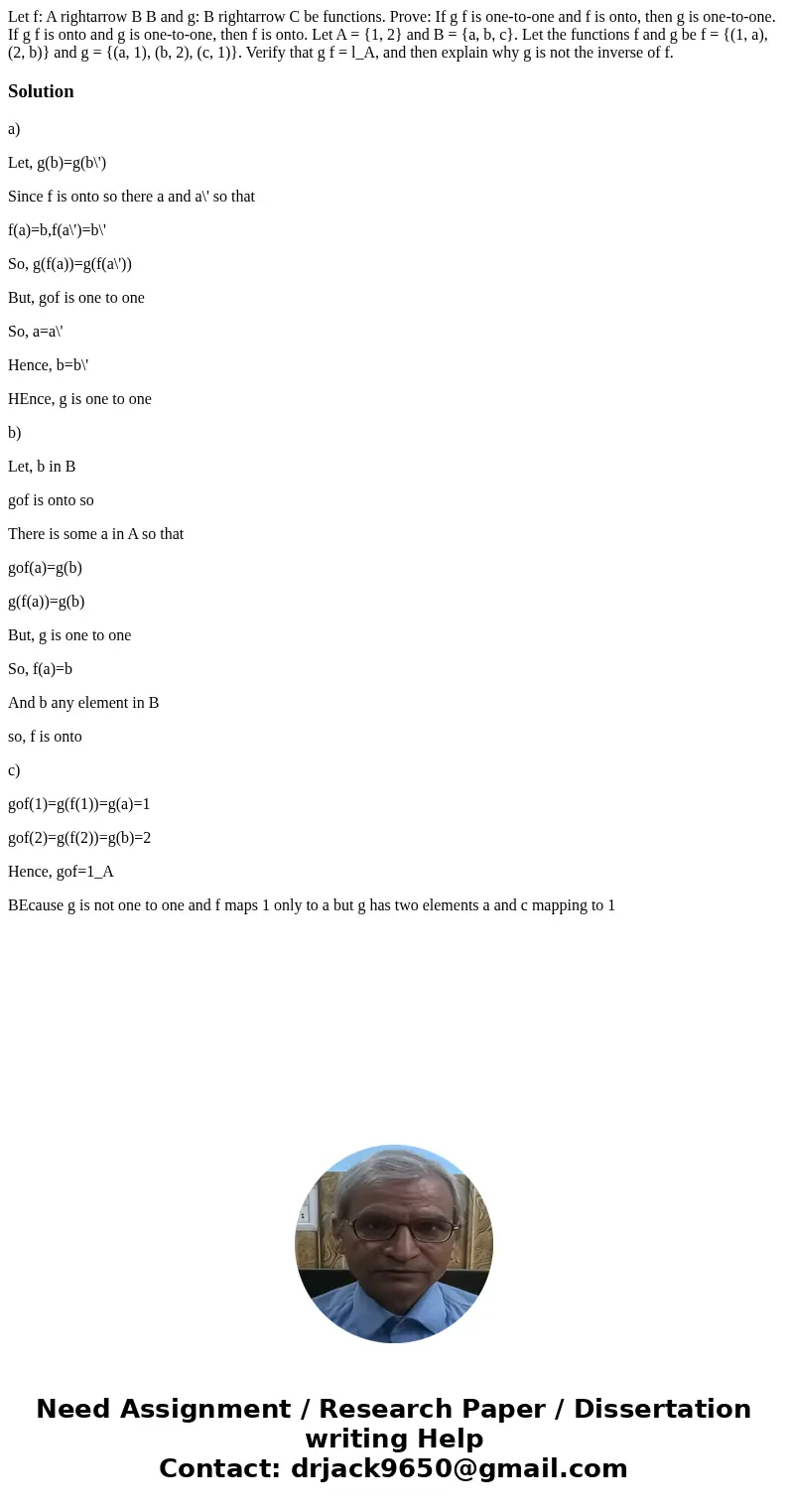Let f A rightarrow B B and g B rightarrow C be functions Pro
Let f: A rightarrow B B and g: B rightarrow C be functions. Prove: If g f is one-to-one and f is onto, then g is one-to-one. If g f is onto and g is one-to-one, then f is onto. Let A = {1, 2} and B = {a, b, c}. Let the functions f and g be f = {(1, a), (2, b)} and g = {(a, 1), (b, 2), (c, 1)}. Verify that g f = l_A, and then explain why g is not the inverse of f.
Solution
a)
Let, g(b)=g(b\')
Since f is onto so there a and a\' so that
f(a)=b,f(a\')=b\'
So, g(f(a))=g(f(a\'))
But, gof is one to one
So, a=a\'
Hence, b=b\'
HEnce, g is one to one
b)
Let, b in B
gof is onto so
There is some a in A so that
gof(a)=g(b)
g(f(a))=g(b)
But, g is one to one
So, f(a)=b
And b any element in B
so, f is onto
c)
gof(1)=g(f(1))=g(a)=1
gof(2)=g(f(2))=g(b)=2
Hence, gof=1_A
BEcause g is not one to one and f maps 1 only to a but g has two elements a and c mapping to 1

 Homework Sourse
Homework Sourse